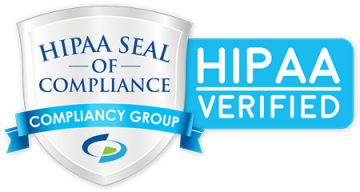SVC Obstruction
SVC obstruction is a narrowing or blockage of the superior vena cava, which is the second largest vein in the human body. The superior vena cava moves blood from the upper half of the body to the heart.
Causes
Superior vena cava (SVC) obstruction is a relatively rare condition.
It is most often caused by cancer or a tumor in the mediastinum (the area of the chest under the breastbone and between the lungs).
The types of cancer that can lead to this condition include:
Breast cancer
Lymphoma
Metastatic lung cancer (lung cancer that spreads)
Testicular cancer
Thyroid cancer
Thymus tumor
Superior vena cava obstruction can also be caused by noncancerous conditions that cause scarring. These conditions include:
Histoplasmosis (a type of fungal infection)
Inflammation of a vein (thrombophlebitis)
Lung infections (such as tuberculosis)
Other causes of superior vena cava obstruction include:
Aortic aneurysm (a widening of the artery that leaves the heart)
Blood clots in the superior vena cava
Constrictive pericarditis (tightening of the thin lining of the heart)
Effects of radiation therapy for certain medical conditions
Enlargement of the thyroid gland (goiter)
Catheters placed in the large veins of the upper arm and neck may cause blood clots in the superior vena cava.
Symptoms
Symptoms occur when something blocks the blood flowing back to the heart. They may begin suddenly or gradually, and may worsen when you bend over or lie down.
Early signs include:
Swelling around the eye
Swelling of the face
Swelling of the whites of the eyes
The swelling will most likely be worse in the early morning hours and go away by mid-morning.
The most common symptoms are shortness of breath (dyspnea) and swelling of the face, neck, trunk, and arms.
Other possible symptoms include:
Decreased alertness
Dizziness
Fainting
Headache
Reddish face or cheeks
Reddish palms
Reddish mucus membranes (inside the nose, mouth, and other places)
Redness changing to blueness later
Sensation of head or ear “fullness”
Vision changes
Exams and Tests
An examination may show enlarged veins of the face, neck, and upper chest. Blood pressure is often high in the arms and low in the legs.
A bronchoscopy (a lighted tube placed through the mouth into the windpipe and lungs) may be performed if lung cancer is suspected.
Blockage of the SVC may be visible on:
Chest x-ray
CT scan of the chest or MRI of chest
Coronary angiography (a heart blood vessel study)
Doppler ultrasound (sound wave test of the blood vessels)
Radionuclide ventriculography (nuclear study of heart motion)
This disease may also affect the results of the following tests:
Abdominal MRI or CT scan
Liver scan
Treatment
The goal of treatment is to relieve the blockage.
Diuretics (water pills) or steroids may be used to temporarily relieve swelling.
Other treatment options may include radiation or chemotherapy to shrink the tumor, or surgery to remove the tumors. A minimally invasive option is placement of a stent to open up the SVC. This is performed by a vascular and interventional radiologist. Surgery to bypass the obstruction is rarely performed.
Outlook (Prognosis)
The outcome varies, depending on the cause and the amount of blockage.
SVC syndrome caused by a tumor is a sign that the tumor has spread, and it indicates a poorer long-term outlook.
Possible Complications
The throat could become blocked, which can block the airways.
Increased pressure may develop in the brain, leading to changed levels of consciousness, nausea, vomiting, or vision changes.
When to Contact a Medical Professional
Call your health care provider if you develop symptoms of SVC obstruction. Complications are serious and can sometimes be fatal.
Prevention
Prompt treatment of other medical disorders may reduce the risk of developing SVC obstruction.
Alternative Names
Superior vena cava obstruction; Superior vena cava syndrome
References
Rice TW, Rodriguez MR, Light RW. The superior vena cava syndrome: clinical characteristics and evolving etiology. Medicine (Baltimore). 2006;85;1:37-42. PMID: 16523051 www.ncbi.nlm.nih.gov/pubmed/16523051.
Ugras-Rey SS. Selected oncologic emergencies. In: Marx JA, Hockberger RS, Walls RM, et al, eds. Rosen’s Emergency Medicine: Concepts and Clinical Practice. 8th ed. Philadelphia, PA: Elsevier Saunders; 2014:chap 123.
Wilson LD, Detterbeck FC, Yahalom J. Superior vena cava syndrome with malignant causes. N Engl J Med. 2007;356:1862-9. PMID: 17476012 www.ncbi.nlm.nih.gov/pubmed/17476012.
Review Date 1/13/2015
Updated by: Jacob L. Heller, MD, MHA, Emergency Medicine, Virginia Mason Medical Center, Seattle, WA. Also reviewed by David Zieve, MD, MHA, Isla Ogilvie, PhD, and the A.D.A.M. Editorial team.
The above information is not all inclusive of the risks, alternatives and benefits. It is not meant to be a substitute for informed discussion between you and your doctor, but can act as a starting point for such a discussion. There are complications possible with any medical procedure. Overall, minimally invasive procedures have a lower complication rate than open surgeries.




 allaeimd.com
allaeimd.com